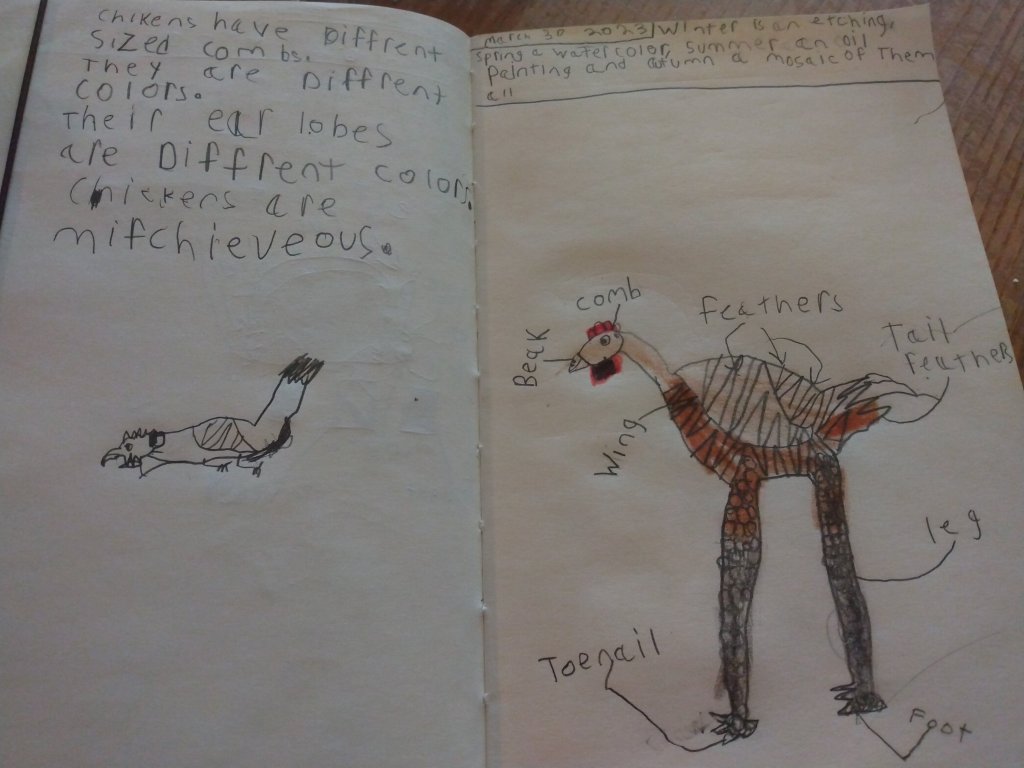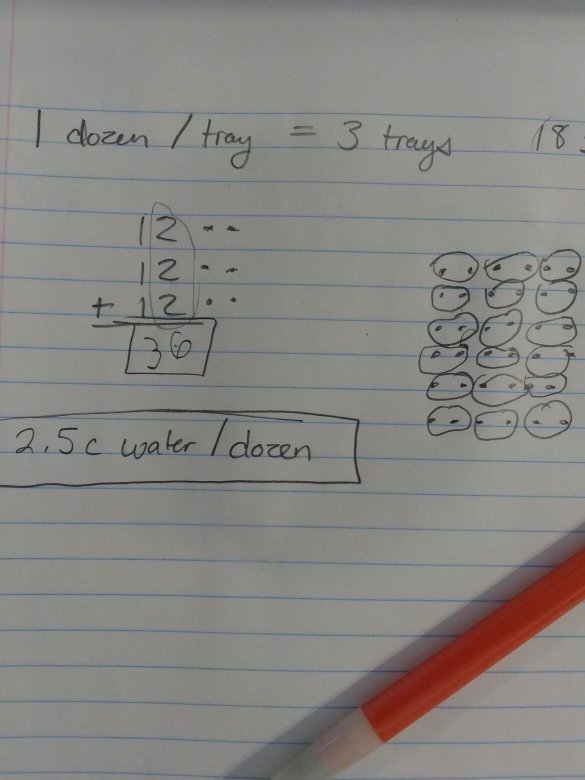Homesteading and Home Education complement one another nicely.
In fact, there have been a handful of curriculum creators/curators who have noticed this and sought to profit from the rich learning opportunities that homesteading provides. Many families would like for their children to have these types of life skills- cooking, food preservation, handicrafts, animal husbandry – but for whatever reason are not equipped to homestead for themselves.
We are one of the blessed families- our homestead sprang up around our children, and vice versa. As one mama told me recently, and unironically, “You’re living the life!” I pondered her words and all the struggle that crops up as a part of what we do, and I was left with the understanding that many times, I have to deal with hard things- death, illness, predation, crop failure… but that I also have the ability to treasure the goodness, beauty, and truth that so saturate this lifestyle. And I find that the more loss I suffer through, the more fully and completely I treasure the success and wins of homesteading, and educating my children, and the multigenerational legacy it provides as we explore what it means to be a part of our specific family culture.

So this was technically supposed to be a part of the Summer Workshop Series, but it lends itself to the blog format nicely, so here goes!
If I had to pick one phrase that I hear most often, it would have to be, “I have no idea how you do it.” Or some variation of that. Let me see if I can shed some light on the life I lead and how we are able to make all this work.
For starters, I have to be extremely self-disciplined. I wake, eat, sleep, clean, and work on a strict schedule. But my schedule serves me, not the other way around. For scheduling novices, I highly recommend Managers of their Homes and Managers of their Chores by Terri Maxwell- read the whole book(s). If you miss the crucial steps laid out, or try to shortcut the systems, they don’t work- speaking from experience.
Additionally, I think it’s important to define terms. By “do it all” is typically meant, educating, general care/mothering, housework, homemaking, animal care, and still having time to read my Bible and pray. I will reiterate, I am a believer in using an air-tight schedule, and tools like timers, music, and consistent routines to make the daily stuff happen when and how it needs to. It doesn’t work perfectly, because my family and I are imperfect people!
I will also stress the importance of priorities. My priorities are my own (and my husbands, well probably his first.) And on the topic of submission to my husband’s priorities first for our time, I could write an entire book. Suffice it to say, he has immense trust in my capacity to manage everything and to choose wisely for our activities and priorities, and so he gives me great freedom to determine when, where, how, and why we do what we do in a given day. I’m learning to live into that freedom and utilize his leadership rather then presume anything, and it actually relieves a lot of the stress and anxiety that comes with trying to take on too much. By keeping a schedule and having set morning, afternoon, and evening routines, I know exactly how much time I have in a day, what I can say yes to committing to, and what, however nice an idea, I must reject as unnecessary or potentially harmful to take on in any given season. That is a very difficult lesson It has taken me about a decade to learn, but I have come to a place of being comfortable with saying “no,” or “not right now,” and trusting that even the best of passed up opportunities can’t compare to what God will do in and through the time I dedicate to fulfilling my God-ordained roles of wife and mother within my home.
One of the ways I “do it all” (and by that I simply mean manage all my responsibilities) aside from just not doing certain things or leaving them for later (see priorities) is to incorporate my children into the rhythms of our home, and to make each thing serve multiple purposes. As an example, I’ll share what we have done for homeschooling this week.
Homesteaducation In Practice
The reality is that there are things that HAVE to be accomplished – hoof trimmings, health checks, clean ups, etc. And each of those things is ripe with educational opportunity. And as it would happen, for 4 hours each day, we are required to teach our children! How fortuitous!

This week we have focused on learning about the specific animals, and even the specific breeds of those animals, which we currently raise on the homestead. Our weekly schedule is as follows:
- Monday 3/27- Dairy Goats: Guernsey breed standards, gestation cycle, kidding process, doe’s nutrition, health and maintenance.
- Tuesday 3/28- Co-op Day (away from the homestead learning)
- Wednesday 3/29- Rabbits: Silver fox breed standards, diet and nutrition, grooming and maintenance, kindling process, kit health/troubleshooting.
- Thursday 3/30- Chickens: chicken anatomy, diet, care and maintenance
- Friday 3/31- Dogs: Border collie breed standards, diet and exercise, training, grooming and maintenance
Originally, Border collies weren’t on the list of animals to study- I actually intended to do a second day on dairy goats and focus a bit more on specific care and maintenance routines as we prepare for our first kidding in April, but at the request of the kiddos, I made Friday our doggy day. I like to give them a degree of input into what we learn about as it keeps them interested and engaged, especially in subjects where they have little natural inclination (like my daughter and language arts , or my son and math.)
Resources
Here are the list of specific texts I used to teach each lesson and subtopic:
- Litt, R., & Litt, H. (2011). A Chicken in Every Yard: The Urban Farm Store’s Guide to Chicken Keeping. National Geographic Books. p. 132-135.
- Steele, L. (2013). Fresh Eggs Daily: Raising Happy, Healthy Chickens. . . Naturally. p. 60-78.
- Belanger, J., & Bredesen, S. T. (2018). Storey’s Guide to Raising Dairy Goats, 5th Edition: Breed Selection, Feeding, Fencing, Health Care, Dairying, Marketing. Hachette UK. ch. 7, 11.
- The American Rabbit Breeders Association, Inc Association. (2020). Raising Better Rabbits & Cavies: Official Guide Book [Book]. American Rabbit Breeders Association, Inc. p. 94-103, 143.
- ARBA. (2020). Standard of Perfection: Standard Bred Rabbits & Cavies (2021st–2025th ed.) [Book]. American Rabbit Breeders Association, Inc. p. 232-233.
- Libby, T. (2006). The Border Collie. Tfh Publications, Incorporated.
- Stebbing, B., & Publications, H. G. T. A. (2011). Nature Drawing and Journaling. p. 95-101.
Most of these are specialty reference guide books I have picked up over the years, and are all highly readable – I’ve read most of them cover to cover. I have found that the photography as well as the true-to-life diagrams and colorful illustrations are really captivating to my young children.
Materials
As far as materials are concerned, you can be as creative and elaborate as you can specifically manage. For me, I don’t tend to have the patience for a lot of crafting, as it takes a lot of prep, time, and materials across 4 kiddos. So we currently utilize nature journals and that drastically cuts down the amount of supplies we need on a given day, as the journal itself is one big project. Some of the materials we commonly use include:
- Unlined journal
- Colored pencils
- Mechanical #2 pencils (0.7 mm lead breaks less than the 0.5mm)
- Scissors
- Glue sticks
- Contact paper (for putting artifacts in our journals)
A word on Nature Journals
Nature journaling is something I have always enjoyed and this year, I picked up a copy of Berry Stebbing’s guide and I think very highly of it – it is beautiful, and easy to follow, and the lessons follow an intuitive line of progression toward more independent nature journaling which is really nice for a beginner. I will have to do a separate post reviewing it.



Nature journals are not something I grade or critique. Their sole purpose (soul purpose) is to act as a means through which my children can express and process what they see and learn through our nature studies, and ponder deeply. They are opportunities for creativity, artistry, handwriting practice, poetry, observational skills, spelling and grammar usage, and so for those reasons, I don’t criticize or critique any of my children’s entries. I do guide them through proper formatting and prompts and I have minimum requirements I ask them to meet (such as date, and labeling their diagrams) but I don’t fuss over the content. I want them to enjoy it and they won’t ever grow to enjoy it if it’s something I’m nitpicky about. I enjoy watching my kids engage with nature in this artistic way, and it is enlightening to me to see the things that they value, appreciate, and notice. I also keep a nature journal, to have as a sort of textbook as the younger kiddos progress toward doing nature journaling with us. I find it keeps the kids engaged to have Mama learning and doing right along side them. It’s also just sorta fun 😊



Hands-on Elements
As with any unit study, I like to incorporate a hands-on learning element. This is super easy with homestead animals because we have the animals just outside to watch, touch, feed, and care for! Here is what we did for each day of our hands-on learning experience:
- Monday 3/27- Nature Journal, refill vitamins and minerals trough, refill baking soda trough, palpate Luna to check for kid movement and growth, check Luna for parasite symptoms (she was top shape!), Watch Mama trim goat hooves and compare and contrast before and after.
- Tuesday 3/28- (Co-op Day, no lesson)
- Wednesday 3/29- Nature Journal, palpate Heather, check for pregnancy (she’s bred!), Harvest purple deadnettle for food, brush the bunnies, practice approaching the cages quietly and slowly, check over nesting box condition, make sure no repairs are needed, clean out rabbit tractor.
- Thursday 3/30- Nature Journal, sketch chickens in motion, observe their movement, preferred nesting areas, feed and water, collect eggs, compare and contrast egg color and size, preserve 3 dozen eggs. The preservation is the biggest project, start to finish and required the most steps and guidance from me. Each kiddo had a specific job in the process, and each one did math appropriate for their level.
- Friday 3/31- Nature Journal, groom dogs, check teeth, foot pads, claws. Teach Flynn a new trick (stay, come, find it) Border collie DVD, make doggie treats.

The opportunities are limitless! This is just one of the many ways to incorporate children on the homestead, and really, to give them the gift of “belonging and becoming” as Sally Clarkson puts it; the gift of home, and of being valued members of a family community with a shared culture.








Love it all!
LikeLiked by 1 person